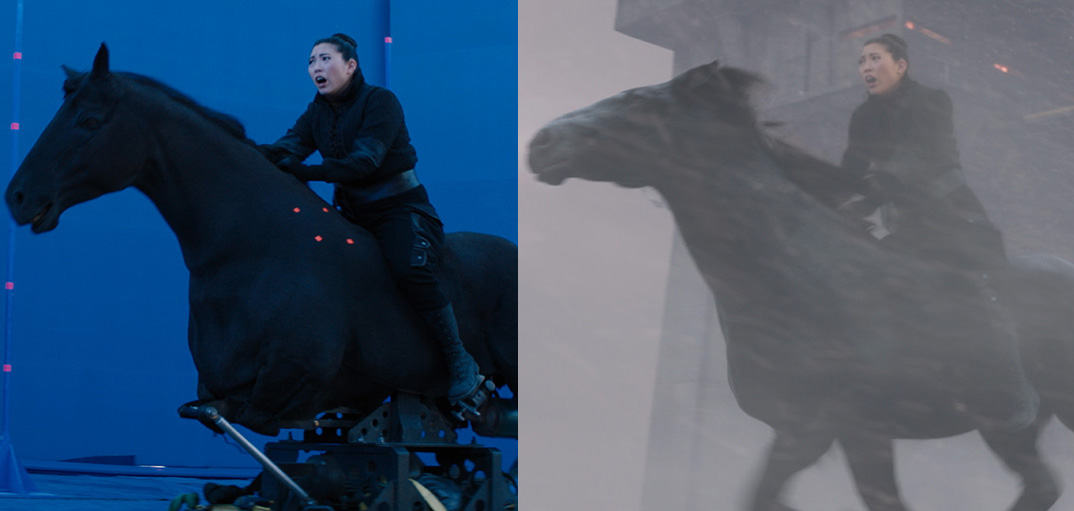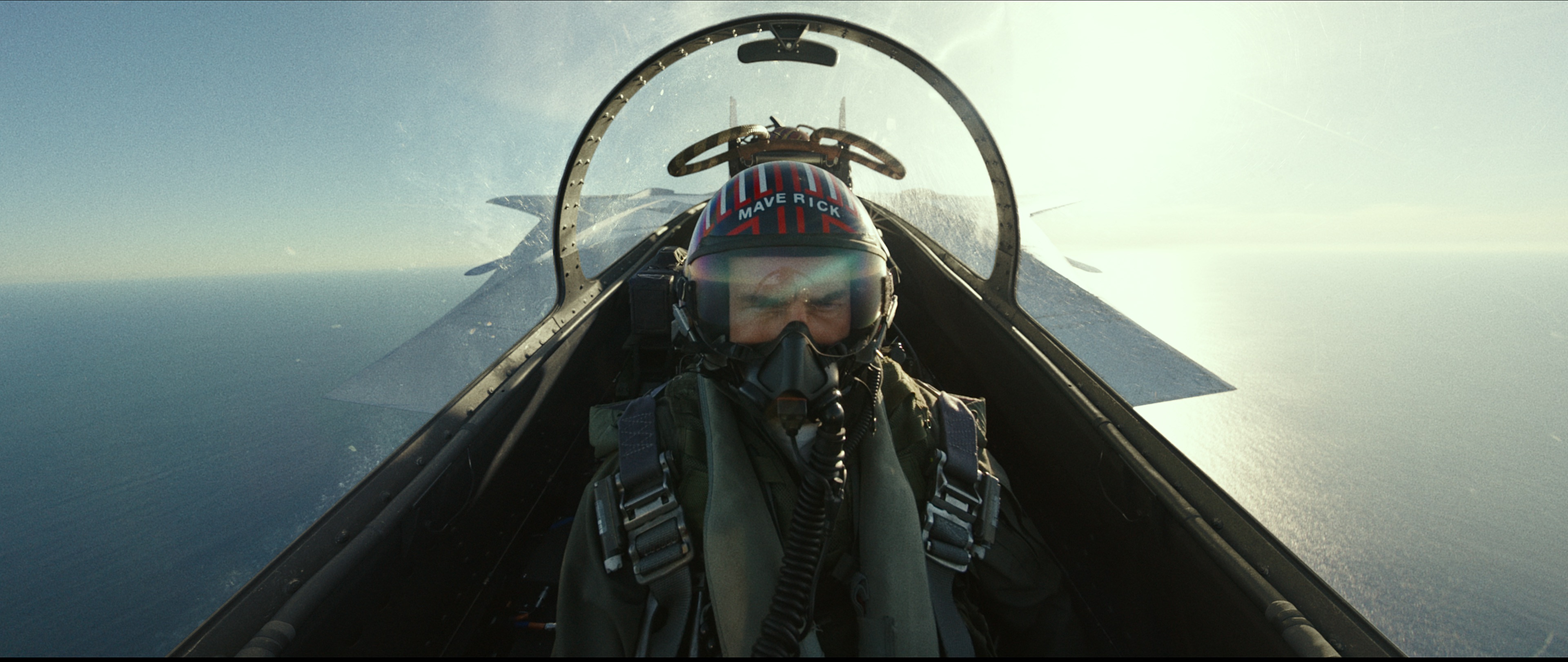Behind the scenes of Method Studios flying Cyclone in ‘Jumanji: The Next Level’
Of the many effects challenges Method Studios faced in the third act of Jumanji: The Next Level – which involves a fortress, an airship and some major action – one of the principal ones was the winged horse Cyclone.
The VFX studio delivered flying shots of the horse as it spreads its wings and takes off with the character Ming (Awkwafina).
Here, Method Studios visual effects supervisor Glenn Melenhorst breaks down how the flying horse shots were achieved.
The horse asset: We received a horse asset from Weta Digital that was based on a generic black horse that wasn’t exactly matched to the live action one. We got their basic mesh and then began to match it into turntables of the real horse. It was a lot more stocky than a lot of the horses we’ve done in the past. We couldn’t use one of our assets, but what we did have to do was work out the whole wings and flying.



Wings, but not feathers: We knew early on that the director Jake Kasdan wanted to do bat wings rather than feathered bird wings for the horse. It was one of these things where they wanted bat wings, but they didn’t want it to look like the Batman logo. They didn’t want sharp edges; they wanted a gracefulness to it, but not too bat-like and angular. So it was one of those ‘make bat wings but don’t make it look like bat wings’ kind of briefs.



Making a horse fly: One of the things we had to try and do was work out what the rest of the horse was doing when it flew. At the start, there was a desire not to have it look like it was galloping as it flew. So we did a bunch of tests where the horse was just dangling and that obviously didn’t look good. It looked like the wings were carrying away a dead animal!
We started to bring back that ‘searching’ look with the feet and then when it was gliding it would hold its legs out in a hero pose. When it got back into galloping, it’s flying. Then there was times when the horse is really working to gain altitude so we did more digging with the feet and create that sense of energy.


Real/digital: Awkwafina, who played Ming, would be filmed riding on a buck, like a bucking bronco setup. It was basically a rig that see-sawed forward and back. Her movement on the buck was okay, but it didn’t have anywhere near the energy that our horse needed. So we would matchmove her on the buck, and then we built our CG horse underneath her and then had it do what it needed to do, which was charge a lot faster and more energetically than this mechanical buck could do. And then we re-projected Awkwafina onto a 3D mannequin and then restored and corrected where it broke.
So she was initially seesawing back and forth, but then a lot of her moving up and down and swaying was put in afterwards by us. For wider shots where the horse is doing even more aggressive movements, we then went with a fully digi-double.






























